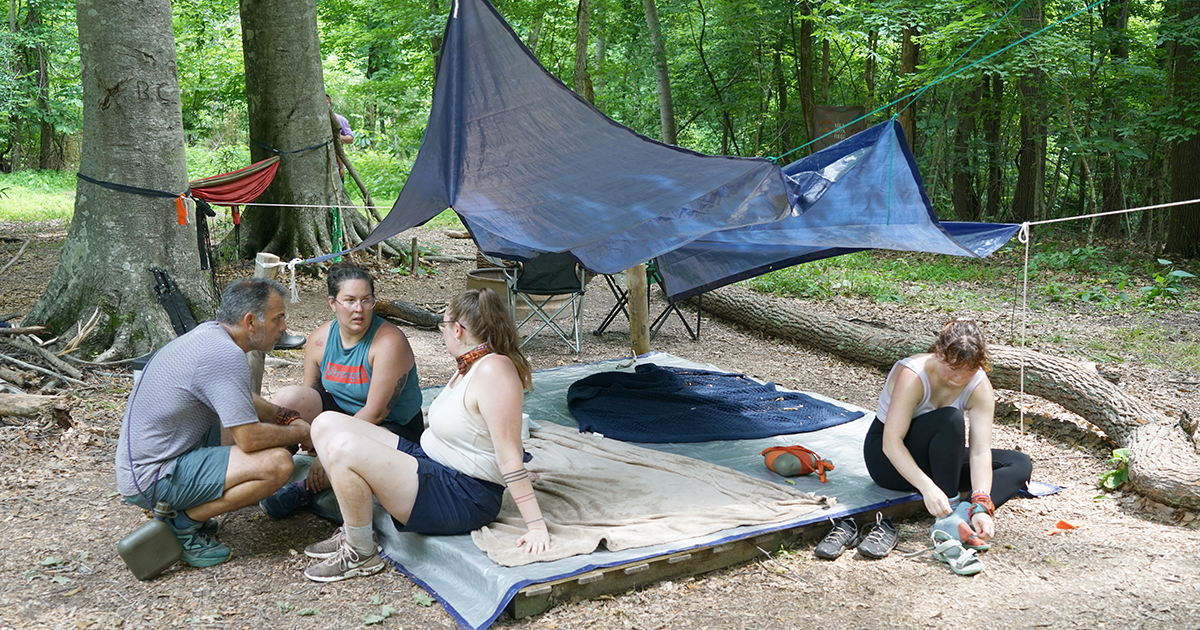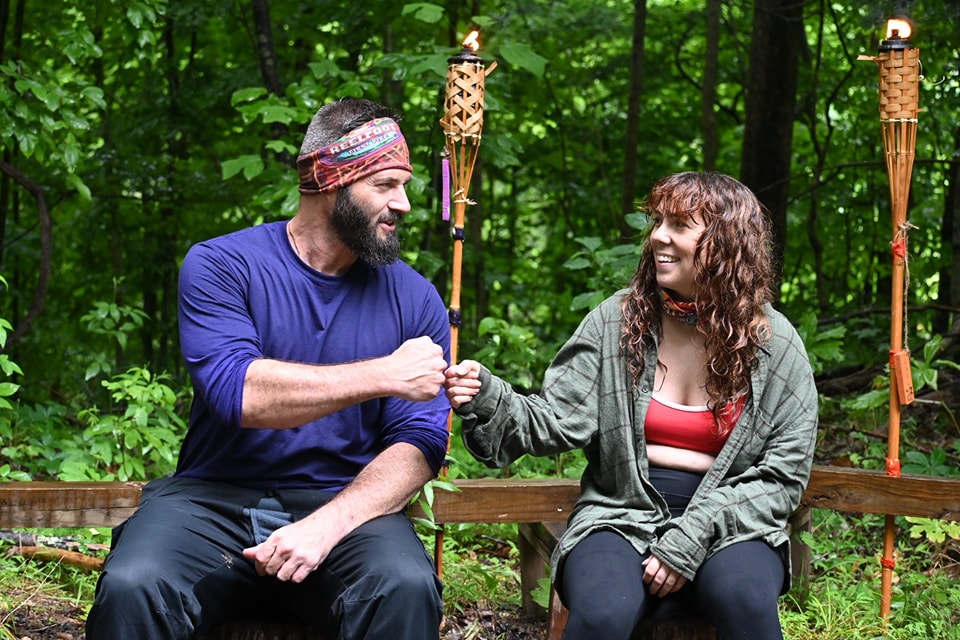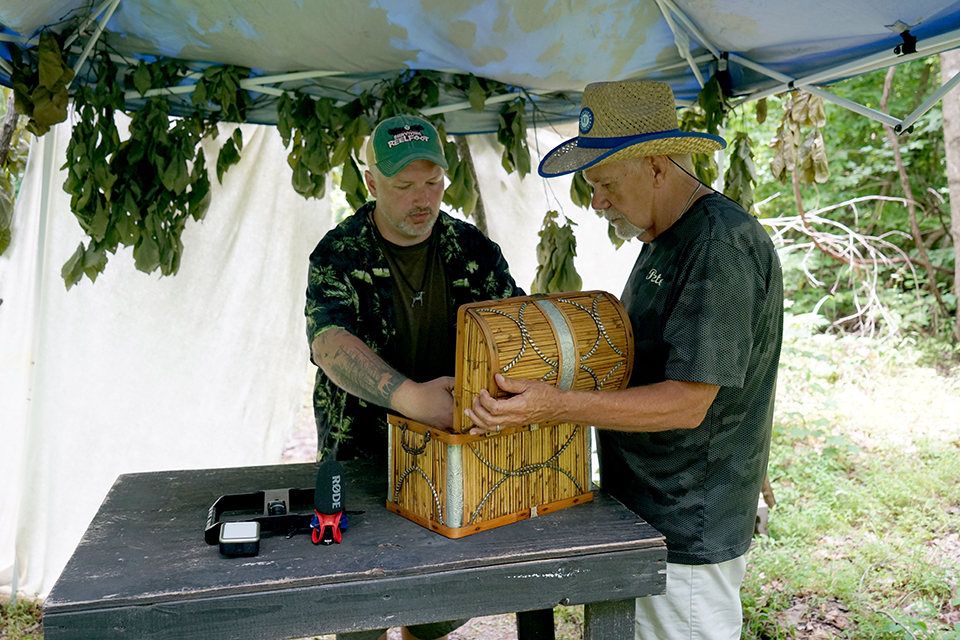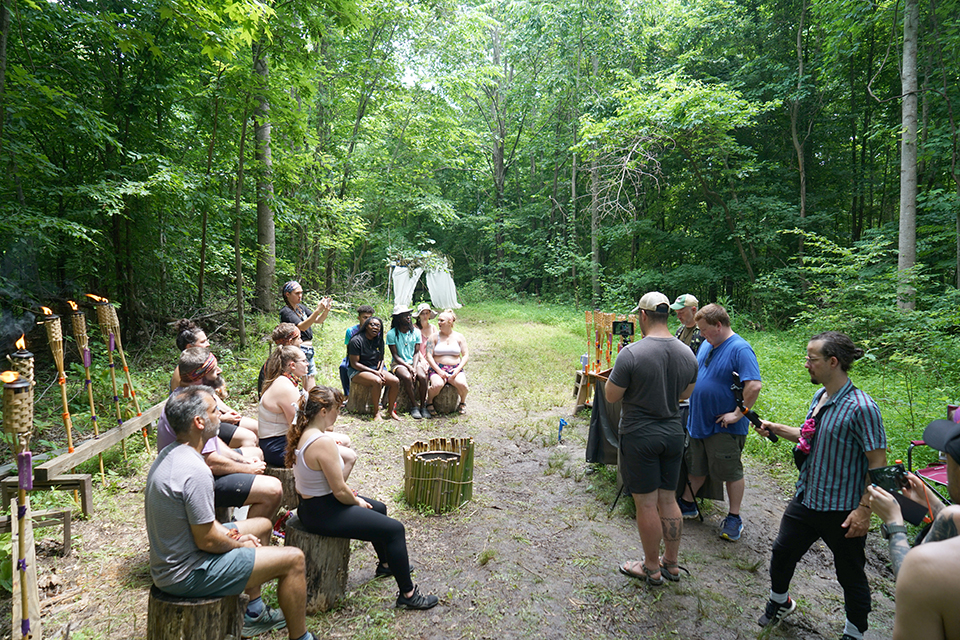“Surviving Reelfoot” creates lifelong connections

For 13 seasons, a small but passionate group of live reality game (LRG) fans have built lifelong connections through “Surviving Reelfoot.”
Based on the popular CBS reality competition “Survivor”, “Surviving Reelfoot” invites players to spend eight days in Hornbeak, Tennessee, to play what the LRG community calls the most authentic experience outside of the television show – with a crew of dedicated volunteers recording and streaming for a worldwide audience.
The 13th season of “Surviving Reelfoot” wrapped on June 7, 2025, with a record-breaking 1,003,647 views on the game’s Facebook, Instagram, TikTok and YouTube channels.
“I’m very lucky that I have a such a passionate team,” said Amos Smith, “Surviving Reelfoot” creator, a Samburg native who lives in Union City, works full-time as a restaurant server, does some acting in the Knoxville area (he spent six hours on set with Dolly Parton and confirms “she’s just as wonderful in person as you think she is”) and is currently shopping a sitcom that he has written.
Smith launched “Surviving Reelfoot” after his own “Survivor” dream fell short in 2010 when he made it to the final 48 in casting. In 2014, he pulled his first LRG together in his mother-in-law’s backyard, with 11 people competing. “Surviving Reelfoot” now calls the 300-acre Hunter’s Sanctuary in Hornbeak home. It’s hosted players from across the country and beyond, with competitors flying in from Australia, Canada and the UK.
“This is life-changing,” said Pete Morgan of Fulton, Kentucky.
Morgan, a fan of “Survivor”, heard about “Surviving Reelfoot” from a friend who played in the second season. Morgan was selected for Season 4 and enjoyed his experience playing so much that he came back for a second season and partnered with Smith and two other producers to build “Surviving Reelfoot” into a sought-after experience in the LRG community.
“I played and met some of my best friends in the world,” Morgan said.
Smith and his team are committed to giving players the best experience possible. The game starts on a Saturday, and everyone is guaranteed at least two nights in their camp. They size up their competitors and compete in reward challenges until Monday morning, when the first tribal council is held. The game moves quickly from there, with three to four eliminations per day until the jury votes for the winner on Day 8.
When a player is eliminated from the game, they go to the lodge.
“We encourage everyone to stay, but they can go home if they choose,” Smith said. “We tell them just because their game is over doesn’t mean their experience is.”
The experience is so moving that many competitors, like Austin Jackson of Amarillo, Texas, return as volunteers.
“We want ‘Surviving Reelfoot’ to continue to grow and get better,” Jackson, Season 11 winner, said. “We all loved the experience we got, and we want to give that to other people. I’ve met some of my best friends from Reelfoot. It strengthens our bonds to come back and takes our relationships to a new level. We get to know each other even better.”
Planning and producing “Surviving Reelfoot” is year-round. The application window typically opens in August, with producers interviewing three to four applicants every Sunday through December. Once the roster is set, producers spend the next six months preparing the cast for the competition. Season 14 will be played May 30-June 6, 2026.
Learn more on any of the “Surviving Reelfoot” social channels, including Facebook, Instagram, TikTok and YouTube.
How is “Surviving Reelfoot” like “Survivor”?
“Survivors,” or in this case, “Reelfooters” are split into tribes and assigned a camp. Season 13 featured two tribes of nine players. Each tribe is provided with a cooking pot, machete, rope, small tarp, bag of white rice, toilet paper, bug spray and all the fresh water they need.
Challenges and rewards are like those seen on “Survivor”. There are obstacle courses, endurance trials and lots of puzzles. Reward challenges include flint, luxury items for the camp, food and the top prize, immunity.
The first seven voted out of the game spend the remainder of their days in the lodge. Their cellphones are returned to them when they are eliminated. Subsequent eliminated players comprise the jury. They are sequestered without their cellphones in the lodge. They observe the challenges and tribal councils.
This season, players whittled down to the final two competitors, and the jury voted for the winner, Rob Sullivan, a massage therapist from New York City, who won $1500.
Bonus Content
“Surviving Reelfoot” creator Amos Smith and co-producer Pete Morgan invited Gibson Electric to their Day 7 shooting of the show in June. While watching the remaining six contestants compete in an immunity challenge featuring a word puzzle, we asked jury members and castaways when they first noticed cognitive decline. They agreed that the combination of little to no food, physical fatigue and the mental exhaustion of constantly thinking about the game set in on the third day of competition.
“It gets overwhelming,” said Joshua “Trav” Travatello.
We also visited with the season’s youngest and oldest competitors – Colby Dixon, 20, and Debra Mitchell, 61. They played on the same tribe and were voted out before making the jury. This season included Outcast Battle Back, but Dixon and Mitchell missed their chance to return to the game.
Dixon lives in Maryland and has competed in “Survivor” LA” and Rock Creek. “Surviving Reelfoot” was his first multi-day game experience.
“My dream is to make it on ‘Survivor,’” he said. “This game is closest to the real ‘Survivor,’ and I wanted that experience.”
Dixon said he came to “Surviving Reelfoot” with high expectations for himself. Despite leaving the game early, he is grateful to have spent time with the producers and crew.
“I’m part of this community now,” he said. “The whole world was unlocked for me.”
Mitchell lives in Georgia. She was a huge “Survivor” fan but didn’t know LRGs existed until COVID-19 hit. Mitchell, a teacher, joined a Zoom “Survivor” game called “Zoomvivor.”
“It was the highlight of my time during COVID,” she said. “I just loved it so much.”
“Zoomvivor” led her to “SINsation” in Virginia where she connected with a “Surviving Reelfoot” participant.
“There’s a whole world of LRGs out there,” Mitchell said.



